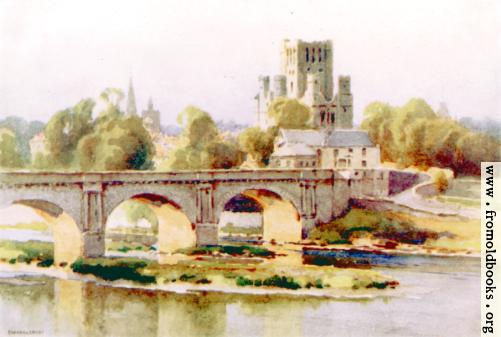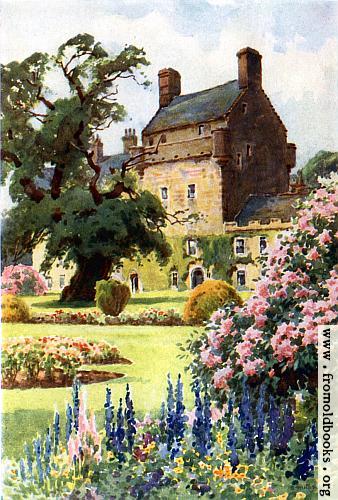
Watercolour illustrations from The Scott Country completed by Ernest William Haslehust (1866-1949).

Bemerside Hill
“This Bemerside Hill is a ‘Mount of vision’ from which all the chief shrines and high places of the Scott Country can be surveyed, at least with the mind’s eye. Abbortsford itself, if not in actual view, can be mapped into the scene by direction and position Out of sight, directly under the brow of the hill, is the ancient square fortalice, with later buildings attached, and grounds stretching down towards the Tweed, where Haigs have been resident for seven centuries. They were benefactors of Melrose when Alexander III was king, and when Thomas the Rhymer was their neighbour and wellwisher, and uttered the prophecy that has so mightiliy helped its own fulfilment:
“Betyde, betyde, whate’er betyde,
Haig shall be Haig of Bemersyde.”
Sir Walter Scott was a later friend of the family, and was often a guest in the beautiful rose-garden below the mansion. A grateful nation bestowed the house and manor on the late Field-Marshal Earl Haig, who now lies at rest close by Sir Walter at Dryburgh.” The Scott Country (pp. 32, 33)
Watercolour illustrations from The Scott Country completed by Ernest William Haslehust (1866-1949).
“It was from Branxholm, on the Teviot above Hawick, that another Scott of the name – generation after generation were Walters – rode forth to rescue ‘Kinmount Willie’ from prison in Carlisle. The Minstrel’s tale, in the Lay, opens at and returns again to Branxholm Ha’; it was at the Tower Inn, at Hawick, where the Duchess Anne of Buccleuch and Monmouth held her receptions, and that the greatest of all the Sir Walters parted from his guests the Wordsworths.” The Scott Country (p. 21)
Watercolour illustrations from The Scott Country completed by Ernest William Haslehust (1866-1949).